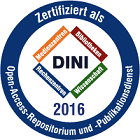Development of intracellular ligands and targeted protein degraders for chemokine receptors and histone deacetylases

Development of intracellular ligands and targeted protein degraders for chemokine receptors and histone deacetylases

| dc.contributor.advisor | Hansen, Finn | |
| dc.contributor.author | Wurnig, Silas Leander | |
| dc.date.accessioned | 2025-10-29T13:03:31Z | |
| dc.date.available | 2025-10-29T13:03:31Z | |
| dc.date.issued | 29.10.2025 | |
| dc.identifier.uri | https://hdl.handle.net/20.500.11811/13604 | |
| dc.description.abstract | Chemokine receptors are a subfamily of G protein-coupled receptors (GPCRs) that play a crucial role in the immune system by regulating the migration and positioning of immune cells. They are involved in various physiological and pathological processes, including inflammation, infection, and cancer. Among these receptors, CXCR1, CXCR2, CCR6, and CCR7 have emerged as attractive therapeutic targets due to their roles in immune cell trafficking, tumor progression, and autoimmune diseases. Traditional antagonists have often targeted extracellular sites, but recent studies have highlighted the significance of intracellular allosteric binding sites (IABS), which offer new opportunities for more selective and effective modulation of receptor function. PROTACs (Proteolysis Targeting Chimeras) represent a novel class of small molecules that induce the degradation of target proteins rather than inhibition. They act by recruiting an E3 ubiquitin ligase to the protein of interest (POI), leading to its ubiquitination and subsequent degradation by the proteasome. This catalytic mechanism offers advantages such as sustained protein knockdown and the potential to target previously “undruggable” proteins. Recently, strategies like PHOTACs (light-controllable PROTACs) have been developed to allow precise spatial and temporal control of protein degradation. This work aimed to develop novel intracellular allosteric antagonists for the chemokine receptors CXCR1, CXCR2, CCR6, and CCR7. To achieve this, structural modifications were made to two established scaffolds: the squaramide-based structure of navarixin and the thiadiazole-1,1-dioxide scaffold of Cmpd2105. Modifications were done at different molecular regions to generate detailed structure–activity relationship (SAR) data on the affinity and selectivity of the synthesized compounds. Additionally, a propargylamide moiety was introduced to enable late-stage functionalization of the antagonists. A key focus of the project was the development of NanoBRET-based binding assays. For this purpose, the modified antagonists were functionalized with a TAMRA fluorophore. To this end the chemokine receptors were fused with a nanoluciferase to allow for intracellular binding studies. The NanoBRET system enabled the identification of intracellular allosteric antagonists by measuring the displacement of the fluorescent tracer, resulting in a reduced BRET signal. This platform was used to evaluate both the binding affinities and the receptor selectivity of the synthesized compounds. The most effective antagonists from each scaffold were then used as protein-of-interest (POI) ligands in the synthesis of PROTACs (proteolysis targeting chimeras). Two PROTAC libraries were developed: one explored various cereblon-targeting thalidomide derivatives to study the influence of the E3 ligase ligand, and the other focused on modifying linker flexibility and physicochemical properties to improve degradation efficiency. The last part of this project focused on the PHOTAC strategy to achieve precise spatiotemporal control of protein degradation. Three HDAC6 targeting PHOTACs were designed, based on the A6 PROTAC and incorporating a photoswitchable lenalidomide-based recruiter. These PHOTACs were tested for their ability to undergo light-induced trans-to-cis isomerization and were evaluated by western blot for their degradation efficiency in both light-activated and inactive states. This approach demonstrated the potential of light-controlled protein degradation for therapeutic applications. | en |
| dc.language.iso | eng | |
| dc.rights | Namensnennung 4.0 International | |
| dc.rights.uri | http://creativecommons.org/licenses/by/4.0/ | |
| dc.subject | HDAC | |
| dc.subject | CCR | |
| dc.subject | CXCR | |
| dc.subject | Chemokine | |
| dc.subject | PROTAC | |
| dc.subject.ddc | 540 Chemie | |
| dc.title | Development of intracellular ligands and targeted protein degraders for chemokine receptors and histone deacetylases | |
| dc.type | Dissertation oder Habilitation | |
| dc.identifier.doi | https://doi.org/10.48565/bonndoc-694 | |
| dc.publisher.name | Universitäts- und Landesbibliothek Bonn | |
| dc.publisher.location | Bonn | |
| dc.rights.accessRights | openAccess | |
| dc.identifier.urn | https://nbn-resolving.org/urn:nbn:de:hbz:5-85037 | |
| dc.relation.doi | https://doi.org/10.1021/acs.jmedchem.3c00769 | |
| dc.relation.doi | https://doi.org/10.1002/cmdc.202400284 | |
| dc.relation.doi | https://doi.org/10.1021/acs.jmedchem.4c02102 | |
| dc.relation.doi | https://doi.org/10.1039/D4MD00972J | |
| ulbbn.pubtype | Erstveröffentlichung | |
| ulbbnediss.affiliation.name | Rheinische Friedrich-Wilhelms-Universität Bonn | |
| ulbbnediss.affiliation.location | Bonn | |
| ulbbnediss.thesis.level | Dissertation | |
| ulbbnediss.dissID | 8503 | |
| ulbbnediss.date.accepted | 22.08.2025 | |
| ulbbnediss.institute | Mathematisch-Naturwissenschaftliche Fakultät : Fachgruppe Pharmazie / Pharmazeutisches Institut | |
| ulbbnediss.fakultaet | Mathematisch-Naturwissenschaftliche Fakultät | |
| dc.contributor.coReferee | Müller, Christa |
Dateien zu dieser Ressource
Das Dokument erscheint in:
-
E-Dissertationen (4410)




